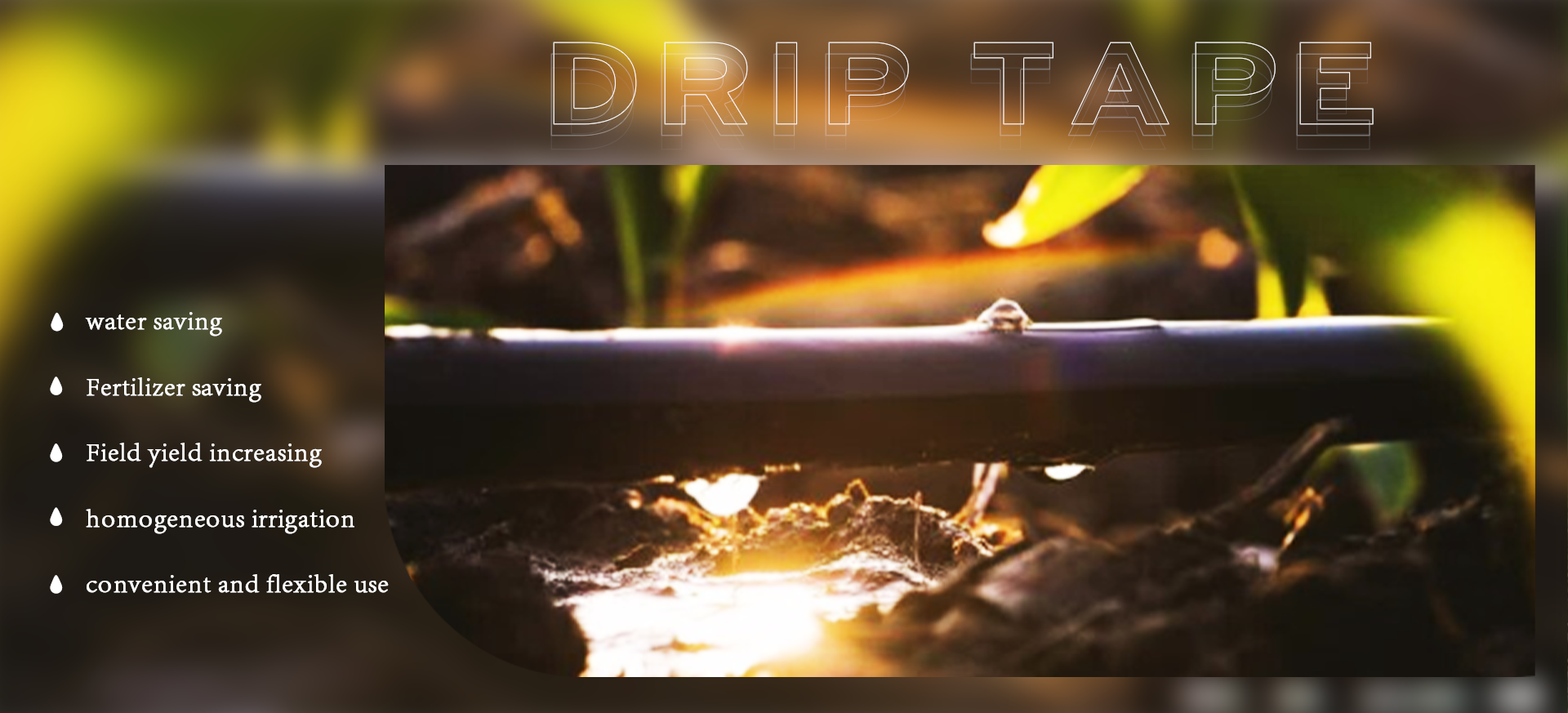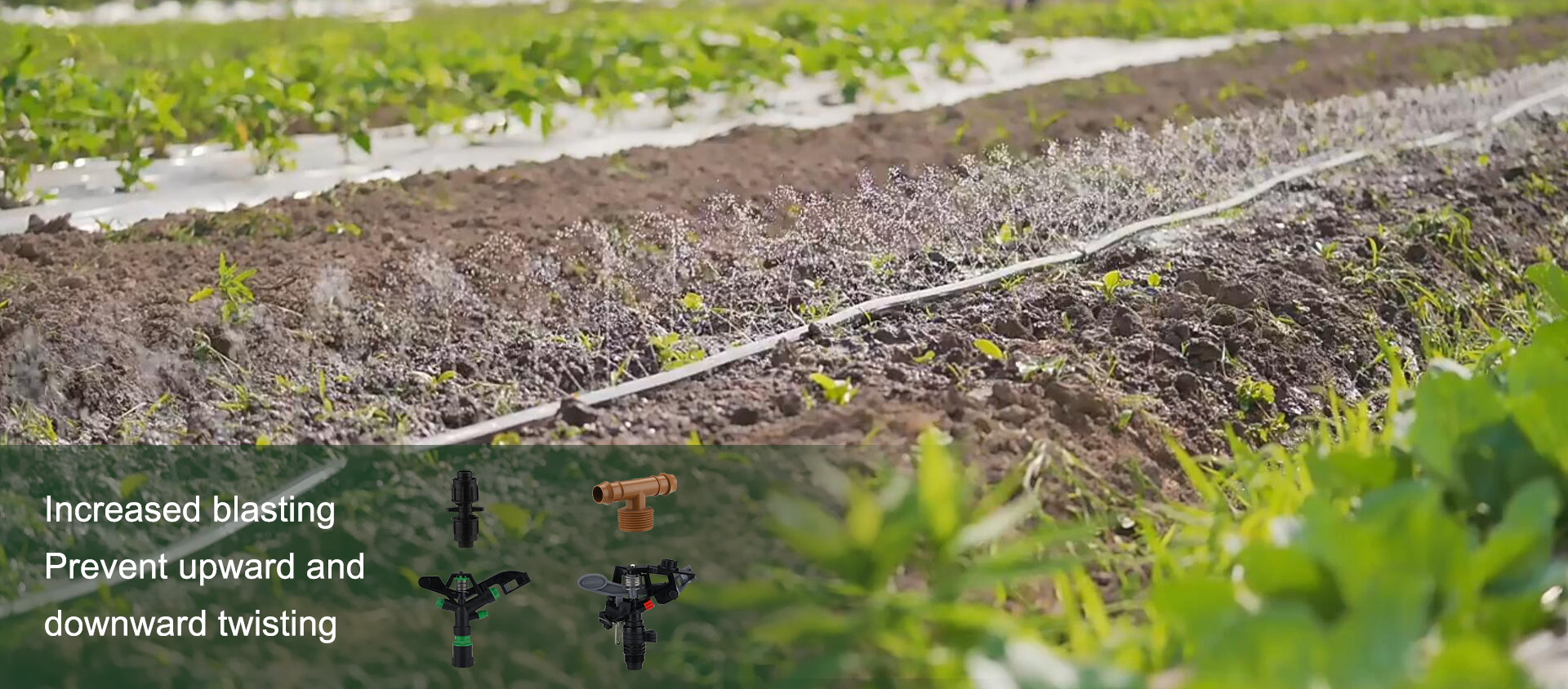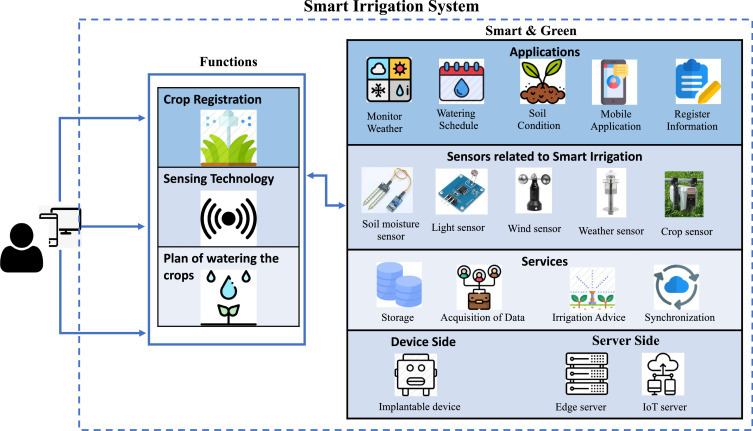
photo via ScienceDirect
Smart irrigation systems use advanced technology, including sensors, weather data, and soil moisture monitors, to automate and optimize irrigation practices. These systems can adjust water delivery based on real-time data, ensuring crops receive the right amount of water at the right time. The Farmer (2024) notes that smart irrigation systems are revolutionizing water management in agriculture by ensuring precision and preventing over-irrigation (The Farmer).
Automated Watering: Smart irrigation systems can adjust water usage based on real-time conditions, reducing water waste and human error.
Water Conservation: By using data-driven decisions, smart systems deliver water more efficiently, avoiding over-irrigation or underwatering.
Improved Crop Yields: Precision watering helps maintain optimal growing conditions, leading to healthier crops and higher yields.
Advantages:
Applications: Smart irrigation is increasingly used on large-scale farms or operations that require precise water management, such as vineyards, orchards, and high-value crop production (AgFunder, 2024) (AgFunder).
Sprinkler irrigation involves spraying water over crops using sprinkler heads or nozzles. This system is versatile and can be adjusted to cover various crop types, making it suitable for large fields and a wide range of agricultural applications. According to Agri-Pulse (2024), sprinklers are particularly effective for large-scale irrigation, as they can efficiently cover vast areas (Agri-Pulse).
Wide Coverage: Sprinklers can irrigate large areas quickly and efficiently, especially on well-drained soils.
Flexible: Sprinklers can be adjusted to suit different crops, climates, and soil types.
Cost-Effective: This system is relatively easy to install and maintain, making it a cost-effective option for large farms.
Advantages:
Applications: Sprinkler irrigation is commonly used for field crops such as wheat, corn, and vegetables, especially in areas with moderate water availability (Successful Farming, 2024) (Successful Farming).
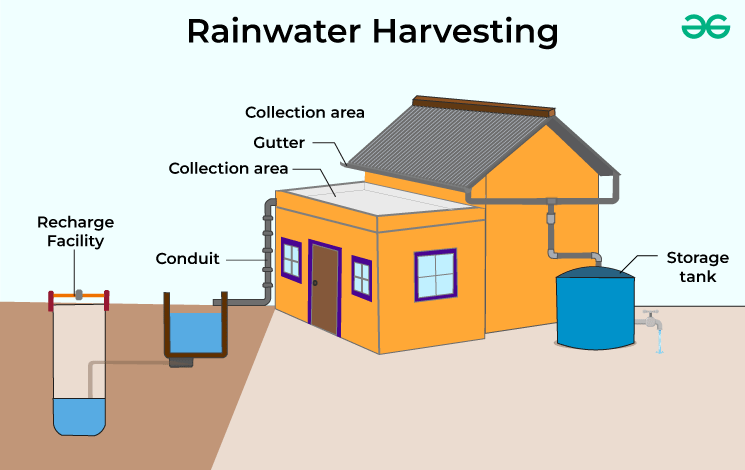
photo via GeeksforGeeks
Rainwater harvesting involves collecting and storing rainwater for agricultural irrigation. This sustainable method reduces reliance on groundwater or municipal water supplies and is particularly beneficial in regions with seasonal rainfall or limited water resources. As noted by Farm Progress (2024), rainwater harvesting is gaining traction as a low-cost, environmentally friendly solution to water scarcity in farming (Farm Progress).
Sustainability: Rainwater harvesting makes use of naturally occurring precipitation, reducing the need for external water sources.
Cost Savings: By relying on stored rainwater, farmers can reduce their water bills and minimize the cost of irrigation.
Environmental Benefits: This method helps conserve freshwater resources, ensuring that agricultural water use has minimal environmental impact.
Advantages:
Applications: Rainwater harvesting is especially beneficial in arid or semi-arid regions, where water availability is often inconsistent (The Farmer, 2024) (The Farmer).
Soil Mulching and Moisture Retention
Using soil mulches, such as organic matter, plastic films, or grass cover, helps to retain moisture in the soil by reducing evaporation. Mulching is an effective method to keep the root zone moist, even in dry conditions. Agri-Pulse (2024) points out that mulching not only conserves moisture but also improves soil health by adding organic matter (Agri-Pulse).
Reduced Evaporation: Mulch prevents water from evaporating quickly, keeping the soil moist for longer periods.
Improved Soil Health: Organic mulches break down over time, adding nutrients to the soil and improving its structure.
Weed Control: Mulch acts as a barrier to weed growth, reducing competition for water and nutrients.
Advantages:
Applications: This method is commonly used in vegetable farming, fruit orchards, and other high-value crops in dry climates (Farm Progress, 2024) (Farm Progress).
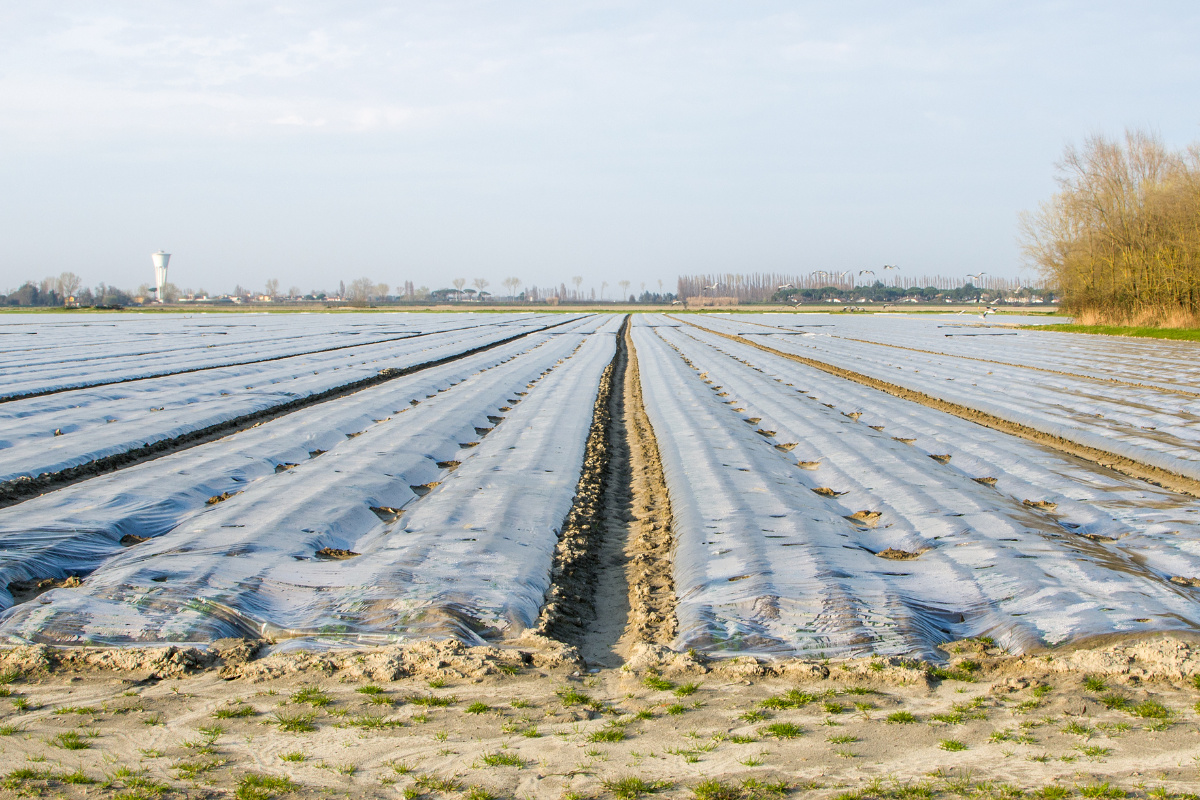
Conclusion
As drought and water scarcity continue to threaten agricultural production, efficient irrigation systems have become essential for ensuring crop health and maintaining yields. Technologies such as drip irrigation, micro-sprinklers, subsurface drip irrigation, and smart irrigation systems offer solutions to conserve water while maximizing crop growth. By integrating these advanced irrigation practices, farmers can ensure sustainable crop production, reduce water waste, and adapt to changing climate conditions. As agricultural innovation continues to evolve, these irrigation methods will play a key role in meeting the challenges of future farming in a water-limited world.
Irrigation Association, "Drip Irrigation: Water Conservation in Agriculture," www.irrigation.org.
AgFunder, "The Impact of AgTech Innovations on Irrigation Efficiency," www.agfunder.com.
Farm Progress, "Innovations in Micro-Sprinkler Irrigation," www.farmprogress.com.
Successful Farming, "Maximizing Irrigation Efficiency with Micro-Sprinklers," www.successfulfarming.com.
Agri-Pulse, "Subsurface Drip Irrigation for Efficient Water Management," www.agri-pulse.com.
Global AgInvesting, "Investment Trends in Agricultural Irrigation Technology," www.globalaginvesting.com.
The Farmer, "The Role of Smart Irrigation in Precision Farming," www.thefarmer.co.uk.
AgFunder, "Smart Irrigation Systems: Leveraging Data for Water Efficiency," www.agfunder.com.
Agri-Pulse, "Sprinkler Systems in Drought-Prone Areas," www.agri-pulse.com.


